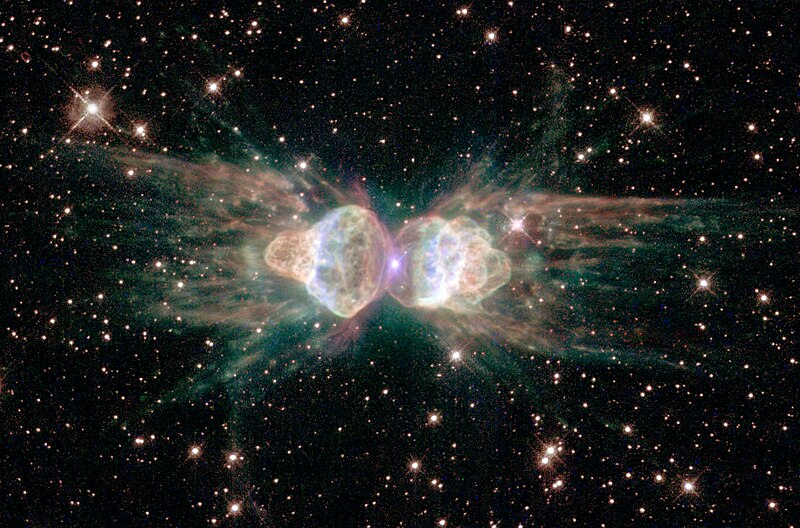File:Ant Nebula.jpg
外观

本预览的尺寸:800 × 528像素。 其他分辨率:320 × 211像素 | 640 × 423像素 | 1,072 × 708像素。
原始文件 (1,072 × 708像素,文件大小:1.14 MB,MIME类型:image/jpeg)
文件历史
点击某个日期/时间查看对应时刻的文件。
| 日期/时间 | 缩略图 | 大小 | 用户 | 备注 | |
|---|---|---|---|---|---|
| 当前 | 2008年2月1日 (五) 01:04 |  | 1,072 × 708(1.14 MB) | Papa November | Full res version from source |
| 2008年2月1日 (五) 01:01 |  | 1,072 × 708(148 KB) | Papa November | Uploaded full resolution image from source | |
| 2008年1月29日 (二) 14:30 |  | 600 × 362(69 KB) | Nk | {{Information |Description=The Ant planetary nebula (Menzel 3 or Mz 3). STScI-PRC2001-05 This NASA/ESA Hubble Space Telescope image reveals the ant's body as a pair of fiery lobes protruding from a dying, Sun-like star. Though approaching the violence o |
文件用途
以下12个页面使用本文件:
全域文件用途
以下其他wiki使用此文件:
- af.wikipedia.org上的用途
- an.wikipedia.org上的用途
- ar.wikipedia.org上的用途
- ar.wikiversity.org上的用途
- arz.wikipedia.org上的用途
- ast.wikipedia.org上的用途
- ba.wikipedia.org上的用途
- bg.wikipedia.org上的用途
- bjn.wikipedia.org上的用途
- bn.wikipedia.org上的用途
- br.wikipedia.org上的用途
- ca.wikipedia.org上的用途
- cbk-zam.wikipedia.org上的用途
- ce.wikipedia.org上的用途
- cs.wikipedia.org上的用途
- de.wikipedia.org上的用途
- en.wikipedia.org上的用途
- Astronomy
- Norma (constellation)
- Talk:Outline of physical science
- Mz 3
- List of planetary nebulae
- Portal:Astronomy/Picture/May 2005
- Portal:Astronomy/Picture/August 2005
- Portal:Astronomy/Picture/17 May 2005
- Portal:Astronomy/Picture/10 August 2005
- Portal:Astronomy/Picture/Week 01 2006
- User:King Zebu
- User:Exoplanetaryscience/sandbox
- User:Metagalaxy/Image
- en.wikinews.org上的用途
查看此文件的更多全域用途。



